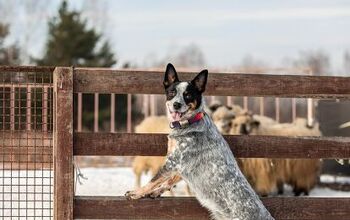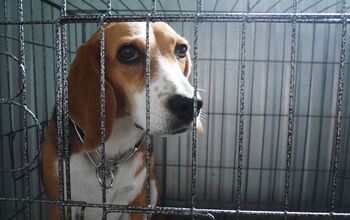Are Small Dogs Harder to Train Than Big Dogs?

Is it true that small dogs are harder to train than big dogs? Let’s take a look at the facts and settle the debate once and for all.
A number of factors go into how easily a dog picks up commands. Some breeds have short attention spans so you need to work hard to keep them engaged. Others are slaves to praise, which means constant acknowledgement of their successes with head pats and verbal approval. There are some (meaning, most) that will do absolutely anything you ask of them, for a treat. And then there is the small dog.
Unfortunately, mini mutts have earned a bad rap for being difficult to train. And before small dog owners across the land rise up in protest, studies from the University of Veterinary Medicine in Vienna, support this. In fact, researchers claim the stereotypical “small dog attitude” is here, its real, and it’s down to his owner.
Related: 4 Top Tether Training Tips for Dogs
But before we look at how to help your wee one overcome his bad attitude, let’s step back a moment, to understand what it is about small dogs that makes them such a difficult student. I mean, we know they’re smart as a whip and totally dedicated to their owners. So, what gives?
- Right off the bat, they’re generally much more excitable and ready to scrap than a large dog. This means they are more easily set off during a training session by the sight of other dogs looming around them. The continual break in focus coupled with the effort to regain their attention results in a dog that will find it tough to get back on the training track.
- Small pooches are also more anxious and reactive in new settings that include strangers. They’re being exposed to new faces in a new surrounding and being asked to sit, stay and generally do things they don’t quite understand. Think stimulation overload. This can lead to a nervous dog that picks up the “fight or flight” emotion and decides to rebel (fight) versus be trained.
The study worked with a group of over 1,200 dogs of various small and large breeds. It was from these findings that they noted a common pattern with small dogs that indicated they were consistently more difficult to train.
Related: Why You Should Let Your Dog Sniff During Walks
But they also wanted to understand why and it was this wondering over whether it was “nature or nurture” that brought the dog’s owner into the picture. Because it’s all down to how they interact with their little guy.
In fact, there were two key areas of difference between owners of large dogs versus owners of small dogs:
- Inconsistent training. Whether it’s not using the same verbal commands or it’s exhibiting different reactions to the same behaviors (e.g. reward or punishment for a behavior one day, but nothing the next time it happens), researchers found that pet parents of small dogs tend to be much less consistent than those of large dogs.
- Lack of shared activities. Larger dogs require more owner interaction for walks, tossing a ball or frisbee in the yard, agility training. Smaller dogs tend to get much less one-on-one time. The studies showed that the more engaged the owner, the more obedient the dog, and the more receptive he was to training.

Sharing space with three seriously judgy Schnoodles and a feline who prefers to be left alone. #LivingMyBestLife
More by Mary Simpson






















